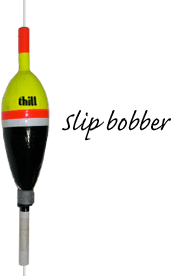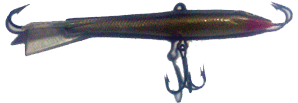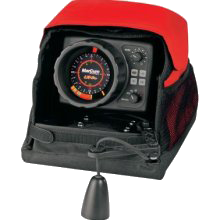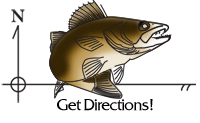

| Ice House Rental About Jeff Testimonials Packing List Ice Fishing Gear LOW Fish Species Photo Gallery Contact Jeff / Get Directions |
Ice fishing gear and set up examples for Lake of the Woods.
While fishing LOW, you will have the chance to catch many species through the ice. While the most popular (and many will say the tastiest), and commonly caught will be the walleye.At the beginning of the season, most fish houses will be positioned closer to shore in shallower waters. As the season progresses, the fish will begin to cycle out into deeper waters. Jeff's team moves the houses, keeping them, and you in the center of the ice fishing action.
See example below of a common ice fishing rig set up for Lake of the Woods fishing. Walleye are likely the most popular fish species targeted at Jeff's Ice-o-miniums. Of course there are no hard/fast rules for set ups and this is just an example.
Lake of the Woods walleye ice fishing rod, tackle, jigs and bait examples
 |
||||||||
 |
Because a person can ice fish with two lines, oftentimes one fishing pole will be set up like the one on the above, and the other line set up to fish "straight-line", style with a jig tipped with a minnow. Usually 4-6 lb test line is enough for walleye and sauger. Fishing rods with a "spring bobber" tip makes monitoring light bites even easier. This allows you to let the bait work with a smaller presentation on one line and actively jig with the other line. With a sensitive rod, you'll be able to actually feel and see your rod tip as the fish takes the jig and you can set the hook. Shown on the left is a common slip bobber set up for ice fishing walleyes. The bobber type in this example is an all season type slip bobber. When in a heated ice fishing house like Jeffs, it will work with no icing problem. When fishing outside in the cold, an IceBuster bobber would be a better bobber choice as the line is under water so won't ice up. After adding the bobber-stop, bead and the slip bobber, attach a barrel swivel, for two reasons. One, the barrel swivel will minimize your bait or lure from rotating which tends to turn off fish, second, it allows you to easily add a fluorocarbon leader to (2-3 feet long) the end of your fishing line. Fluorocarbon is stronger than monofiliment of the same diameter, and nearly invisible, it sinks and is fray resistant. To this attach a small lead weight to help get your bait down quickly between fish and prevent your bait from potentially swimming over and tangling other fishing lines. Finally, attach either your jig or hook. NOTE: lures or jigs are not required for walleye fishing success. Plain hook set ups produce just as many fish as lures. Here are some ice fishing jig examples commonly used jigs on Lake of the Woods.
On the left are other types of minnow shaped lures such as Jiggin' Raps, the Salmo minnow and others which have produced very impressive catches as well. It appears that often it will be larger, more aggressive fish that will hit these and will rise 10 or more feet from below to come up and strike on this type of lure. To add scent they are often tipped with a whole minnow or sometimes just the head. If you have one, a rod holder can be convenient way to hold your ice fishing rods while attending to your other tasks while keeping it secure. Live baits for Lake of the Woods ice fishingMost visitors at Jeff's ice fishing for walleye use live bait, (live bait is provided by Jeff with rentals). The most common ice fishing walleye bait used are probably fathead or shiner minnows. Try variations with bait size and type until you find what works best. Sometimes if fish are biting light or short, or stealing your bait, you may just use a minnow head which will entice the fish to take your lure. Some fishermen use what are called Emerald Shiners. These may or may not be dead and preserved. |
|||||||
 |
||||||||
 |
||||||||
 |
||||||||
 |
||||||||
     |
||||||||
Fishing Flashers
When it comes time to actually know what is happening below the ice, there is no doubt that a "flasher" or "graph" can show you exactly where they are and how they are reacting to your presentation. Flashers are a sonar device where you lower a transducer into the water and the circular graph relays everything between you the bottom of the lake and any fish in between. The bottom is marketed red while fish are marked with by yellow, green, or red line (red being the larger fish). You can also "see" your presentation including your weight and bait. The ability to "see" fish in the water column allows you to be able to adjust your presentation. Walleye tend to stick toward the bottom, though they will often rise higher or even feed through higher water and the flasher is a way to adjust your presentation to match. There are three primary brands for flashers, Marcum, Humminbird, and Vexilar.
One of the great things about fishing with Jeff that cannot be overstated is his genuine interest in your success. He checks in on his guests. If you like, he can even offer suggestions or advice on what seems to be working at other shacks, or even move the sleeper if need be.
Don't wait, there are only so many slots in a season! Reserve your ice fishing trip with Jeff for an experience you won't forget!
|
|
|---|








